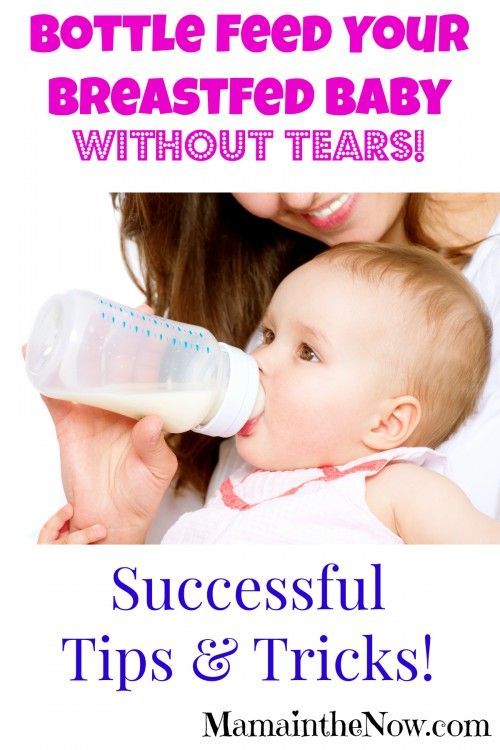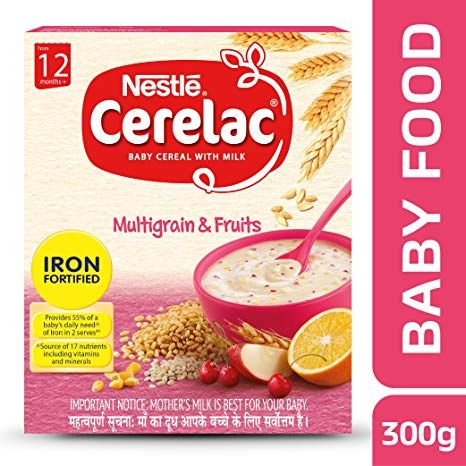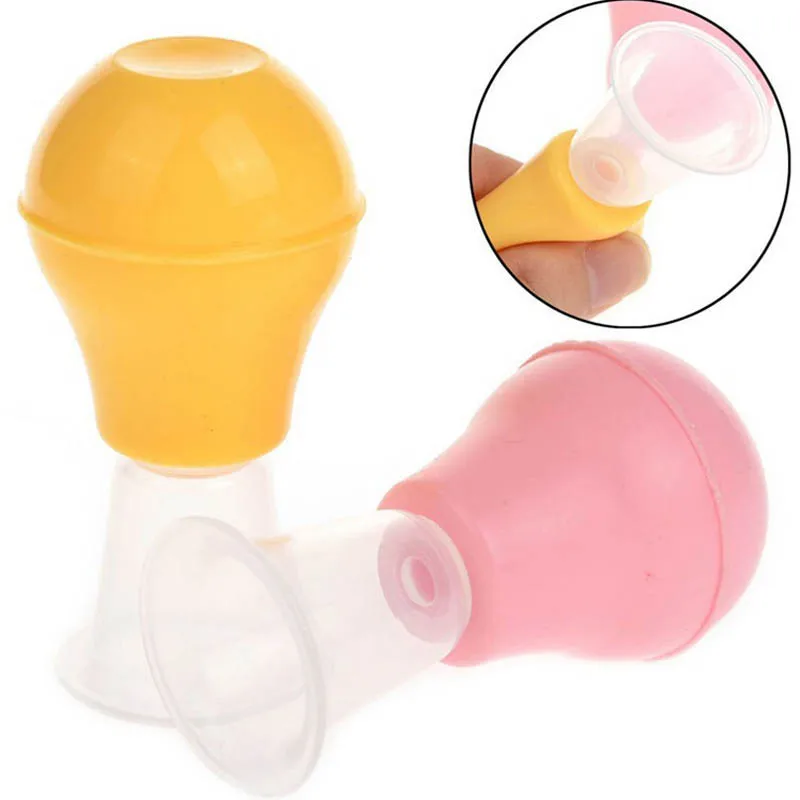Baby feed amount by weight
Amount and Schedule of Baby Formula Feedings
- In the first week after birth, babies should be eating no more than about 1 to 2 ounces (30 to 60 ml) per feed.
- During the first month, babies gradually eat more until they take 3 to 4 ounces (90 to 120 ml) per feed, amounting to 32 ounces per day. Formula-fed babies typically feed on a more regular schedule, such as every 3 or 4 hours. Breastfed babies usually take smaller, more frequent feedings than formula-fed infants.
If your baby sleeps longer than 4 to 5 hours during the first few weeks after birth and starts missing feedings, wake them up and offer a bottle.
By the end of the first month: Your baby will be up to at least 3 to 4 ounces (120 mL) per feeding, with a fairly predictable schedule of feedings about every 3 to 4 hours.
By 6 months: Your baby will consume 6 to 8 ounces (180–240 mL) at each of 4 or 5 feedings in 24 hours.
Formula feeding based on body weight
On average, your baby should take in about 2½ ounces (75 mL) of infant formula a day for every pound (453 g) of body weight. But they probably will regulate their intake from day to day to meet their own specific needs, so let them tell you when they've had enough. If they become fidgety or easily distracted during a feeding, they're probably finished. If they drain the bottle and continues smacking their lips, they might still be hungry.
There are high and low limits, however. If your baby consistently seems to want more or less than this, discuss it with your pediatrician. Your baby should usually drink no more than an average of about 32 ounces (960 mL) of formula in 24 hours. Some babies have higher needs for sucking and may just want to suck on a pacifier after feeding.
On-demand feeding
Initially it is best to feed your formula-fed newborn a bottle on demand, or whenever they cry with hunger. As time passes, your baby will begin to develop a fairly regular timetable of their own. As you become familiar with their signals and needs, you'll be able to schedule their feedings around their routine.
As time passes, your baby will begin to develop a fairly regular timetable of their own. As you become familiar with their signals and needs, you'll be able to schedule their feedings around their routine.
Eating & sleeping patterns
Between 2 and 4 months of age (or when the baby weighs more than 12 lb. [5.4 kg]), most formula-fed babies no longer need a middle-of-the-night feedings. They're consuming more during the day, and their sleeping patterns have become more regular (although this varies considerably from baby to baby). Their stomach capacity has increased, too, which means they may go longer between daytime feedings—occasionally up to 4 or 5 hours at a time.
If your baby still seems to feed very frequently or consume larger amounts, try distracting them with play or with a pacifier. Sometimes patterns of obesity begin during infancy, so it is important not to overfeed your baby.
Getting to know your baby's feeding needs
The most important thing to remember, whether you breastfeed or bottlefeed, is that your baby's feeding needs are unique.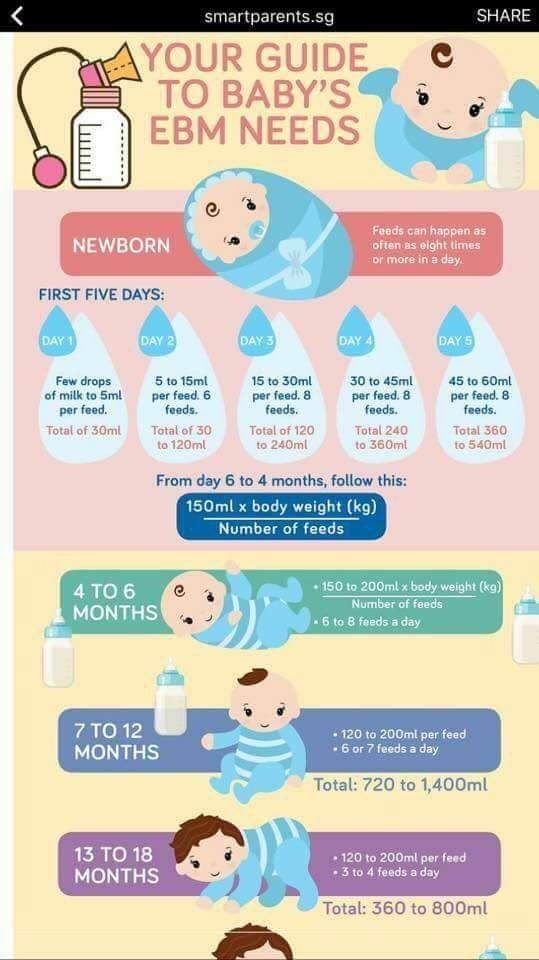 No book―or website―can tell you precisely how much or how often they need to be fed or exactly how you should handle them during feedings. You will discover these things for yourself as you and your baby get to know each other.
No book―or website―can tell you precisely how much or how often they need to be fed or exactly how you should handle them during feedings. You will discover these things for yourself as you and your baby get to know each other.
More information
- How Often and How Much Should Your Baby Eat?
- Making Sure Your Baby is Getting Enough Milk
- Is Your Baby Hungry or Full? Responsive Feeding Explained (Video)
- Remedies for Spitty Babies
- Last Updated
- 5/16/2022
- Source
- Adapted from Caring for Your Baby and Young Child: Birth to Age 5 7th Edition (Copyright © 2019 American Academy of Pediatrics)
The information contained on this Web site should not be used as a substitute for the medical care and advice of your pediatrician. There may be variations in treatment that your pediatrician may recommend based on individual facts and circumstances.
There may be variations in treatment that your pediatrician may recommend based on individual facts and circumstances.
Baby formula feeding chart: How much formula by weight and age
Is your baby getting too much or too little formula? It's an important question that worries many new parents, especially those with newborns. When deciding how much formula to give your baby, it's important to watch their hunger cues as well as looking at guidelines based on age and weight. In general, before they're eating solids, babies need 2.5 ounces of formula per pound of body weight each day.
These guidelines are for babies who are exclusively formula-fed for the first 4 to 6 months, and then fed a combination of formula and solids up to age 1. If your baby is getting a combination of breast milk and formula, talk to their doctor for separate advice.
Your pediatrician can tell you where your baby falls on the growth charts, make sure they're growing steadily on their own growth curve, and help you ensure that they're getting a healthy amount of formula. If you're ever worried about your baby's growth, behavior, or development, talk with their doctor.
If you're ever worried about your baby's growth, behavior, or development, talk with their doctor.
How much formula for a newborn
For the first few days, offer your newborn 1 to 2 ounces of formula every 2 or 3 hours. (At first, newborns may only take a half ounce of formula at a time.)
After the first few days, give your newborn 2 to 3 ounces of formula every 3 to 4 hours.
Initially it's best to feed your formula-fed newborn on demand, whenever they show signs that they're hungry. Because your little one can't tell you when they want a bottle, you'll need to learn to read their hunger cues. Crying is often a late sign of hunger, so if you can, try to catch the earlier signs that it's time for a feeding.
Here are some hunger cues to watch for:
- Smacking or licking their lips
- Rooting (moving their jaw, mouth, or head in search of food)
- Putting their hands to their mouth
- Opening their mouth
- Fussiness
- Sucking on things
- Becoming more alert
- Crying
As time passes, your newborn will begin to develop a fairly regular feeding schedule.![]() You'll become familiar with their cues and needs, and knowing when and how much to feed them will be much easier.
You'll become familiar with their cues and needs, and knowing when and how much to feed them will be much easier.
Formula feeding chart by weight
During the first 4 to 6 months, when your baby isn't eating solid foods, here's a simple rule of thumb: Offer 2.5 ounces of formula per pound of body weight every 24 hours, with a maximum of about 32 ounces.
| Weight | Ounces of formula |
|---|---|
| 6 pounds | 15 fl oz every 24 hours |
| 7 pounds | 17.5 fl oz every 24 hours |
| 8 pounds | 20 fl oz every 24 hours |
| 9 pounds | 22.5 fl oz every 24 hours |
| 10 pounds | 25 fl oz every 24 hours |
| 11 pounds | 27.5 fl oz every 24 hours |
| 12 pounds | 30 fl oz every 24 hours |
These numbers aren't rigid rules. They offer a rough estimate for what your baby may need. Some babies will grow well while taking less than the recommended amount, while others consistently need more. Your baby's daily feedings will also vary according to their individual needs – in other words, they may want a bit more on some days and a bit less on others.
Your baby's daily feedings will also vary according to their individual needs – in other words, they may want a bit more on some days and a bit less on others.
Formula feeding chart by age
Here are typical amounts per day based on age:
| Age | Ounces of formula |
|---|---|
| Full-term newborn | 2 ounces per bottle every 3 to 4 hours |
| 1 month old | 3 to 4 ounces per bottle every 3 to 4 hours |
| 2 month old | 4 to 5 ounces per bottle every 3 to 4 hours |
| 3 month old | 4 to 6 ounces per bottle every 3 to 4 hours |
| 4 month old | 4 to 6 ounces per bottle, 4 to 6 times a day |
| 5 month old | 4 to 6 ounces per bottle, 4 to 6 times a day |
| 6 month old | 6 to 8 ounces per bottle, 4 to 5 times a day |
| 7 month old | 6 to 8 ounces per bottle, 3 to 5 times a day |
From 8 months old until their first birthday, you can expect your baby to have 7 to 8 ounces per bottle, 3 to 4 times a day.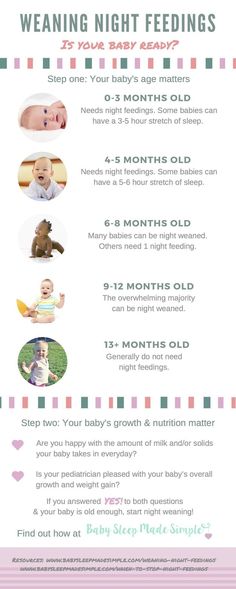
As your baby gets older – and their tummy gets bigger – they'll drink fewer bottles a day with more formula in each. It's important not to overfeed your baby so they'll stay at a healthy weight. Your baby shouldn't have more than 32 ounces of formula in 24 hours.
When they reach their first birthday, they can stop drinking formula and transition to cow's milk in a bottle, sippy cup, straw cup, or open cup. Limit your toddler to 16 to 24 ounces (2 to 2.5 cups) a day of whole milk, so they have room for other healthy foods.
Signs that your baby's getting enough formula
Here are signs that your baby's getting all the formula they need:
- Steady weight gain. They continue to gain weight after their first 10 days and follow a healthy growth curve during their first year. (Most babies lose up to 7 to 10 percent of their birth weight in the first few days and then regain it by the time they're about 2 weeks old.)
- Happy baby.
 They seem relaxed and satisfied after a feeding.
They seem relaxed and satisfied after a feeding. - Wet diapers. They wet two to three diapers a day in the first few days after birth. Over the next few days, the amount should increase to at least five to six wet diapers a day.
Signs your baby's getting too much formula
Babies are usually good at eating the amount they need, but bottle-fed babies can drink too much at times. Here are the signs that they're getting too much formula:
- Vomiting after a feeding may be a sign that your baby had too much. (Spitting up is normal, vomiting isn't.)
- Tummy pain after a feeding can also be a sign of overfeeding. If your baby draws up their legs or their tummy seems tense, they may be in pain. (See other possible reasons for stomach pain in babies.)
If your baby seems to want to eat all the time, even after finishing a bottle, talk to your pediatrician. Using a pacifier may help soothe their need to suck.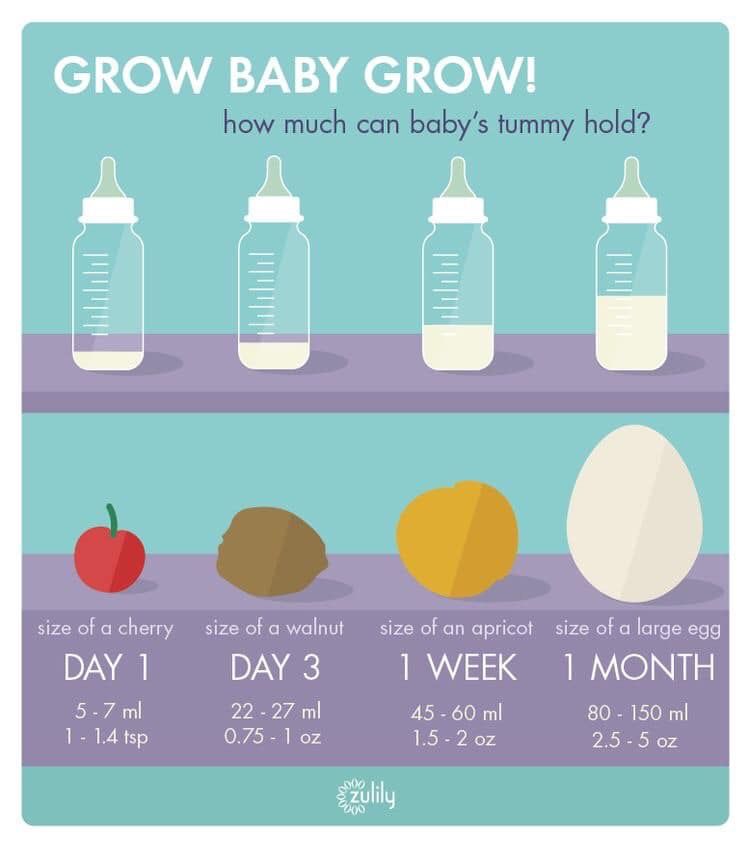
Formula-feeding tips
- In general, babies eat when they're hungry and stop when they're full, so resist the temptation to encourage your baby to finish each bottle. Overfeeding during infancy can contribute to obesity later in life.
- Don't respond to your baby's every cry with a bottle. They may be crying because their diaper is wet, they're cold or hot, they need to be burped, or they want to be close to you. (Learn more about why babies cry, and how to soothe them.)
- Your baby may be hungrier than usual during growth spurts. These typically occur 10 to 14 days after birth and around 3 weeks, 6 weeks, 3 months, and 6 months of age.
Read more:
- Formula Feeding Problem Solver
- How to safely store and use formula
advertisement | page continues below
How to calculate the formula according to the weight of the child
Ekaterina Borisovna Bulavina
pediatrician of the 1st category
On artificial feeding, they do not feed on demand: you need to control the one-time and daily amount of food, its frequency. The development and health of the baby depends on this. Learn how to calculate the amount of formula for your baby at different ages so you don't overfeed or leave him hungry. The formulas for the calculation are given to us by a pediatrician of the first category, Ekaterina Borisovna Bulavina.
The development and health of the baby depends on this. Learn how to calculate the amount of formula for your baby at different ages so you don't overfeed or leave him hungry. The formulas for the calculation are given to us by a pediatrician of the first category, Ekaterina Borisovna Bulavina.
— Ekaterina Borisovna, why should parents observe the dosage of the mixture?
- Adapted infant formula, unlike breast milk, has a constant composition, a certain calorie content, the ratio of proteins, fats and carbohydrates, saturation with vitamins and microelements. These parameters are calculated in accordance with the daily need of the child. Therefore, formula feeding cannot be free or on demand. If you give the mixture randomly and without taking into account the daily requirement, you can get either an overfed child with a risk of developing obesity, diabetes mellitus, or, conversely, a hypotrophic, developmentally lagging baby who, for health reasons, cannot eat the prescribed norm.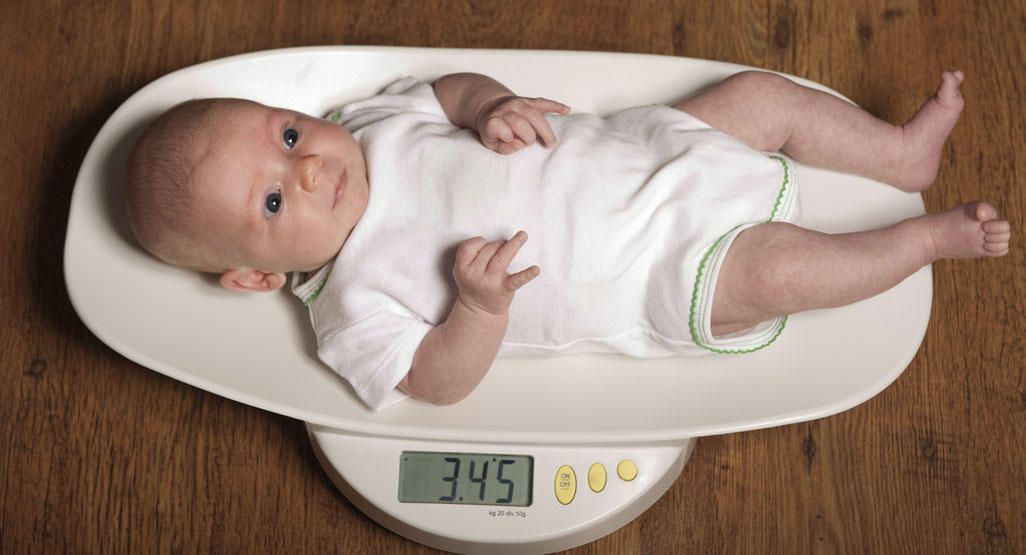
HOW MUCH FORMULA SHOULD YOU GIVE YOUR CHILD. FORMULA FOR CALCULATION OF NUTRITION FOR CHILDREN UNDER A YEAR
— Please tell us how to calculate the amount of formula by weight or other parameters.
- There are several methods for calculating the adapted milk formula for a formula-fed child - by weight and height, by the age of the child. As a rule, the daily volume is initially calculated. Then it is divided by the number of feedings, depending on the age of the child, to determine the required amount per feeding.
How to calculate infant formula by weight (up to 10 days)
How to calculate formula by weight and age of baby (over 10 days old)
For a baby over 9 months
- Which method of calculation is preferable?
- Each method is useful in a specific situation. The most accurate, especially in small children, is the calorimetric method, but it is rather complicated and is used less and less.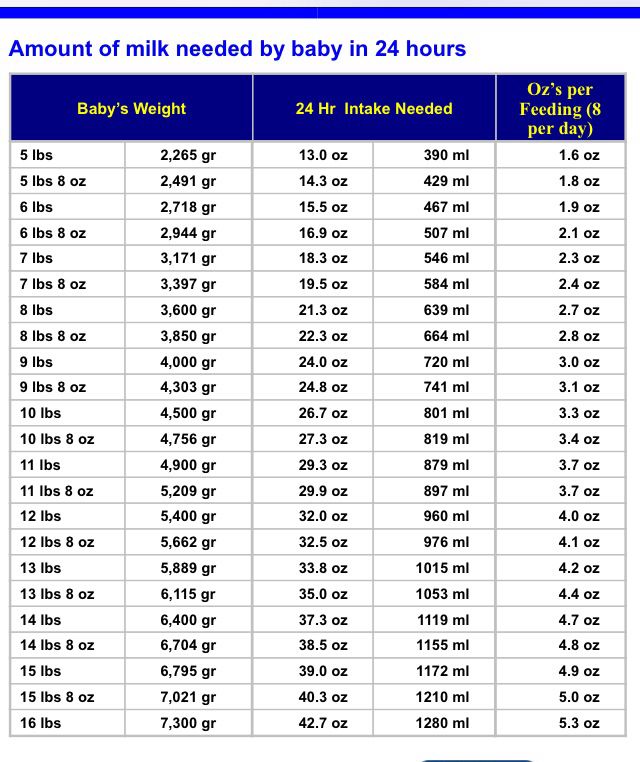 If the child has average physical indicators, then the volumetric method will be optimal.
If the child has average physical indicators, then the volumetric method will be optimal.
UNDERFEEDING AND OVERFEEDING - HOW TO AVOID PROBLEMS
- What nuances should parents take into account when determining the amount of formula?
- When calculating the formula, parents most often focus on the recommendations indicated on the packaging for the average child. It is better if the doctor makes the initial calculation of nutrition based on the weight and growth indicators of a particular baby, the presence or absence of perinatal risk factors, intrauterine growth retardation, malnutrition at birth and the banal ability to suck, the strength and condition of the nervous system.
Parents will have to follow the feeding regimen - the amount of food calculated by the doctor, the intervals between meals. Small deviations in one direction or another are allowed, but it is important to ensure that the child eats an approximate daily volume of milk formula.
The calculation of the amount of the adapted mixture is made by the pediatrician after assessing the child's health status, its initial anthropometric indicators and monthly increases. Further, the change in the dynamics of weight will be decisive in calculating the volume of the mixture.
— What problems can haphazard feeding lead to?
— The composition of the mixture is balanced and calculated based on the daily need of the child in calories and nutrients. Unbalanced chaotic feeding will lead to an overabundance or deficiency of not only calories, but also essential nutrients, and overfeeding or underfeeding will lead to developmental delay. During this period, the formation of the whole organism takes place, and the future health of the child largely depends on what foundation will be laid at the beginning.
LOOK AT A WET DIAPER AND YOU WILL UNDERSTAND WHETHER THE BABY IS FAT
— Ekaterina Borisovna, the child is full, overfed or underfed — how to understand?
1.
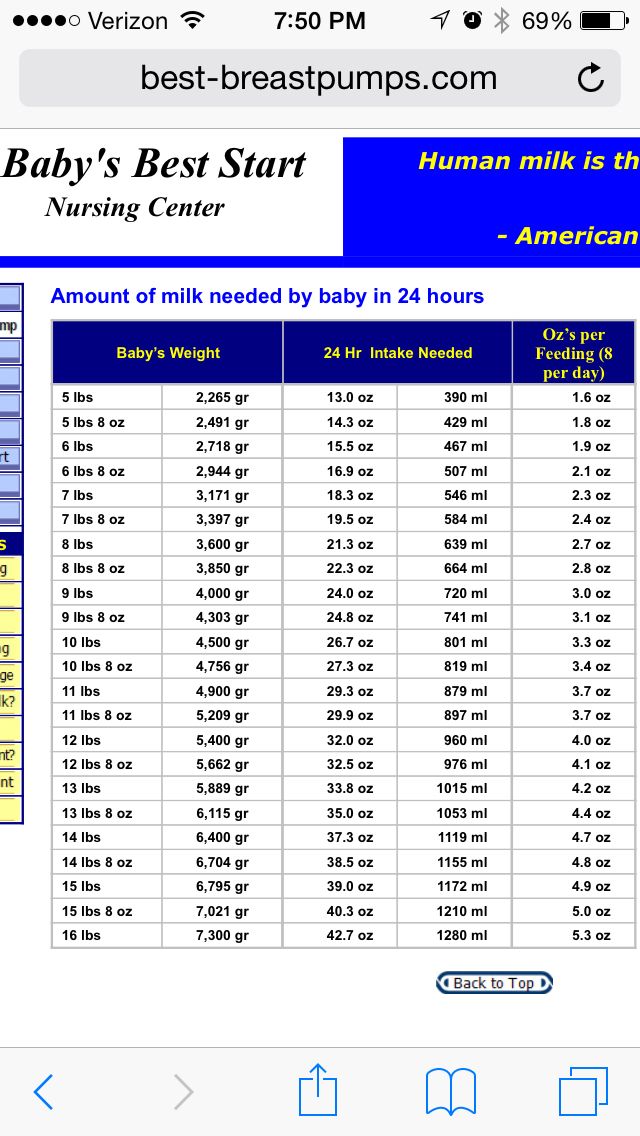 Assess the volume of the drunk mixture and its compliance with the calculated norm.
Assess the volume of the drunk mixture and its compliance with the calculated norm. - It is better to analyze the daily volume, since the child may well eat a little more in one feeding, a little less in another. The degree of saturation is taken into account - the baby has eaten or asks for more, has assimilated the received volume or burped out the excess mixture, maintains intervals between feedings, or begins to worry ahead of time.
2. Assess diuresis and stool pattern.
— If there is enough urination, then the child is getting enough nourishment. Rare urination, up to 4-6 times a day, is uncharacteristic for an infant: it means that he is malnourished. Formula-fed stools usually occur once every two to three days. If a child has a tendency to constipation or rare bowel movements due to the small amount of contents in the intestines, this also indicates malnutrition.
3. Assess the general condition of the child.
— Harmony of development, compliance of weight and height indicators with average statistical norms are important here.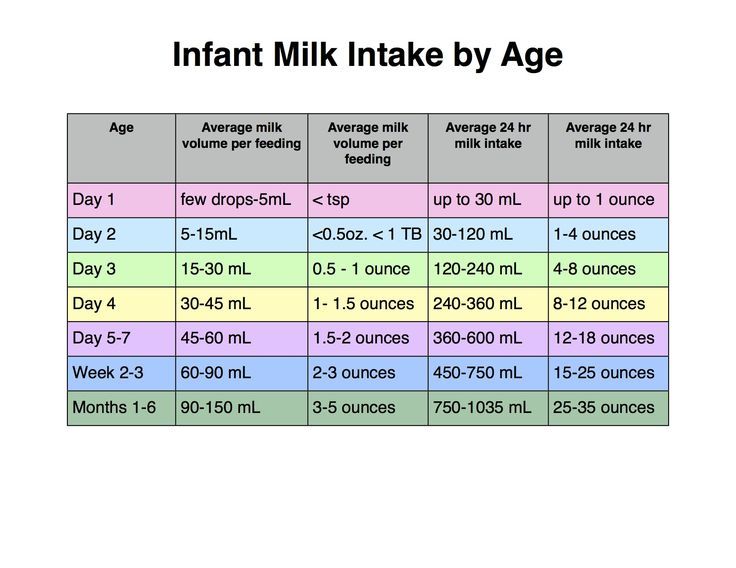 Both excess and underweight require revision and timely correction of nutrition.
Both excess and underweight require revision and timely correction of nutrition.
— When should I go to the pediatrician?
— For a timely assessment of the child's condition, you should contact the pediatrician at least once a month. The specialist conducts an anthropometric study, evaluates the thickness of the skin fold, the correspondence of height and weight, the level of psychomotor development. The doctor will notice problems with nutrition in the first months of life.
The most common reasons for emergency visits to the pediatrician:
- profuse regurgitation after feeding;
- infrequent urination, stool retention;
- marked anxiety of the child;
- sucking problems;
- the child quickly gets tired during feeding, cannot eat the minimum amount of the proposed mixture;
- excessive pallor, cyanosis of the extremities, cyanosis of the nasolabial triangle during feeding;
- No weight gain despite good appetite.
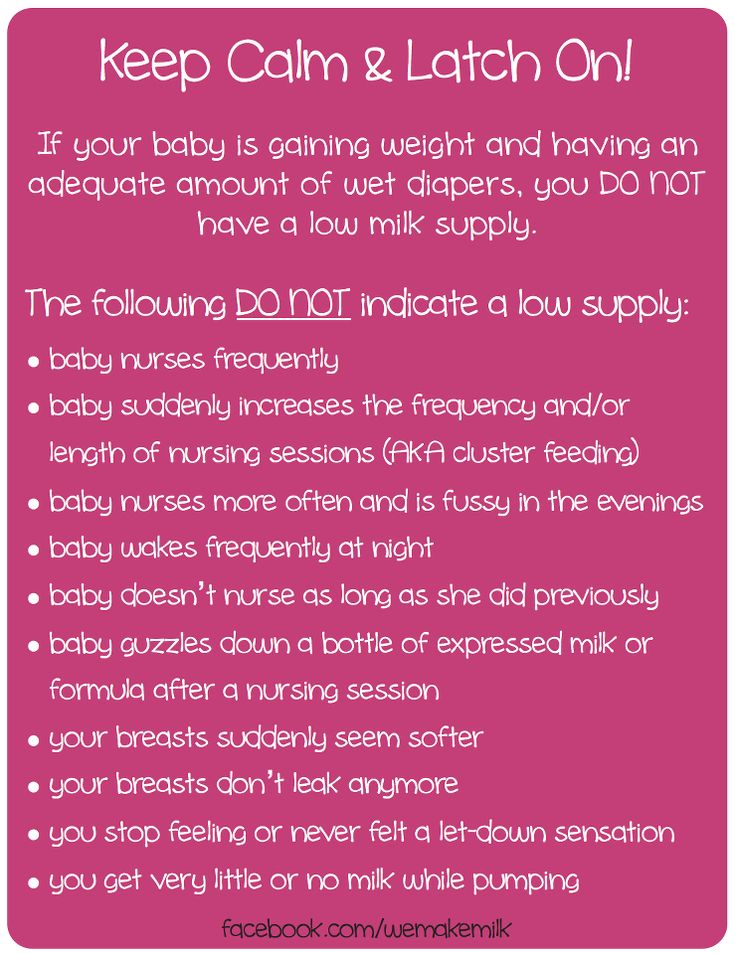
PROPERLY DILUTION OF INFANT FORMULA
— How to prepare infant formula and how long can it be stored?
- Prepare infant formula according to package directions. Each manufacturer, including MAMACO ® , may have its own dilution rules that require strict adherence.
Mix dilution
- Wash your hands thoroughly with soap and only then start cooking.
- Use well-washed and sterilized feeding utensils beforehand.
- The recommended dilution water temperature is 37-40°C.
- Bottled baby water is sufficient to warm up. Water from other sources requires boiling and cooling to the required temperature.
- The powder is placed in the water bottle and not vice versa to avoid lumps.
- Gently shake the contents of the bottle until the powder is completely dissolved. Vigorous shaking will result in abundant foam.
- Check your temperature again by placing a few drops on your wrist.
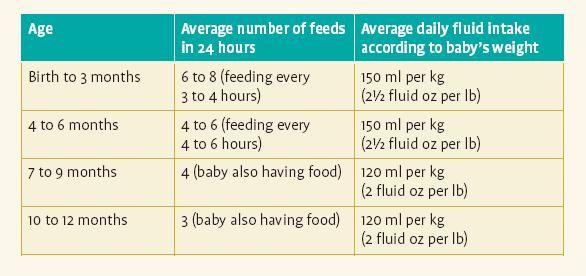 In the absence of discomfort, offer the mixture to the baby.
In the absence of discomfort, offer the mixture to the baby.
Ready Mix Storage
- Some manufacturers allow 24 hour storage. But in reality, the mixture rarely costs more than 4-5, since the intervals between feeding the child do not exceed these periods and it is not advisable to prepare a new portion if there is already a diluted one.
- How do you reheat formula that has cooled down or been stored in the refrigerator?
— The method of warming up is of fundamental importance in order to preserve the beneficial properties of nutrition and not harm the baby.
Breast milk is undeniably the best food in the first year of life. If natural feeding is not possible, the child will receive an adapted mixture that will help him fully develop and provide the maximum of the necessary nutrients. For this, it is important that the child eats an approximate daily allowance. Systematic underfeeding and overfeeding equally adversely affect the growing organism.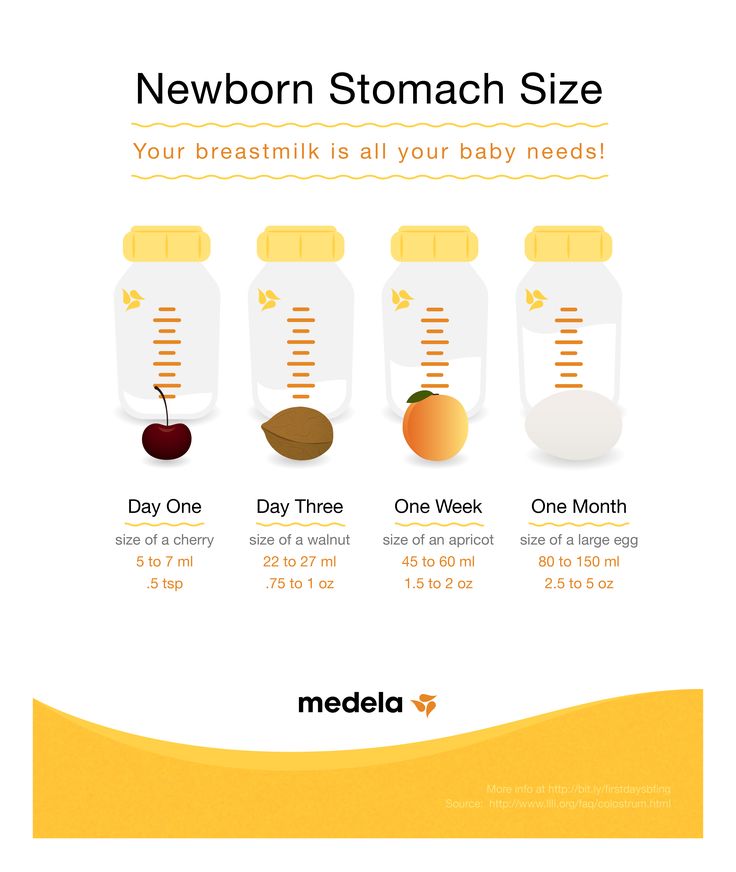 To assess the development of the baby, it is necessary to visit the pediatrician every month, and if alarming symptoms appear, without waiting for the planned visit, show the baby to the doctor. In the organization of artificial feeding, it is not enough to correctly calculate the amount of the mixture, it is important to prepare it correctly - following the simple rules that we talked about will help organize the full and safe nutrition of the baby with breast milk substitutes.
To assess the development of the baby, it is necessary to visit the pediatrician every month, and if alarming symptoms appear, without waiting for the planned visit, show the baby to the doctor. In the organization of artificial feeding, it is not enough to correctly calculate the amount of the mixture, it is important to prepare it correctly - following the simple rules that we talked about will help organize the full and safe nutrition of the baby with breast milk substitutes.
* Breast milk is the best food for babies. WHO recommends exclusive breastfeeding for the first 6 months of a child's life and continued breastfeeding after complementary foods are introduced until the age of 2 years. Before introducing new products into the baby's diet, you should consult with a specialist. The material is for informational purposes and cannot replace the advice of a healthcare professional. For feeding children from birth. The product is certified.
#Baby formulas #pregnancy
Digestion in newborns and infants and its features
#Baby Digestion #breast-feeding #baby formula #Lure #Tips for mom #Baby development
Kiseleva Elena Sergeevna
Candidate of Medical Sciences, Scientific Advisor MAMAKO ®
Goat's milk in children's nutrition: for or against
#Food #Tips for mom #Baby digestion #breastfeeding
Javier Diaz Castro
professor, lecturer
Why DHA, ARA and lutein are added to infant formula
#baby formulas #Baby development
Yakovenko Margarita Pavlovna
Candidate of Medical Sciences, Pediatrician, Pediatric Neurologist, Medical Advisor MAMAKO ®
First tests and vaccinations: how to prepare yourself and your child
#Tips for Mom
Kizino Polina Alexandrovna
pediatrician, perinatal psychologist
Omicron in children: how dangerous it is and how babies get sick up to a year
#Advice for Mom
Kiseleva Elena Sergeevna
Candidate of Medical Sciences, Scientific Advisor MAMAKO ®
How to properly rock a baby to sleep
#Advice for Mom
Kizino Polina Alexandrovna
pediatrician, perinatal psychologist
Calendar of doctor visits during the first year of a child's life
#Advice for Mom
Kizino Polina Alexandrovna
pediatrician, perinatal psychologist
How to tell if a baby has a food allergy
#allergy #Tips for mom #breast-feeding #baby formula #lure
Kiseleva Elena Sergeevna
Candidate of Medical Sciences, Scientific Advisor MAMAKO ®
Principles of successful lactation: checklist for mom
#Tips for Mom #breastfeeding
Yakovenko Margarita Pavlovna
Candidate of Medical Sciences, Pediatrician, Pediatric Neurologist, Medical Advisor MAMAKO ®
Neurologist for a child under one year old: first examination
#Tips for Mom #Baby development
Yakovenko Margarita Pavlovna
Candidate of Medical Sciences, Pediatrician, Pediatric Neurologist, Medical Advisor MAMAKO ®
See all
View all
Goat's milk in children's nutrition: for or against
# Lure # Tips for Mom # Baby's digestion # breastfeeding
Javier Diaz Castro
professor, lecturer
Digestion in newborns and infants and its characteristics
# Baby digestion # breast-feeding # infant formula # Lure # Tips for Mom # Baby development
Kiseleva Elena Sergeevna
Candidate of Medical Sciences, Scientific Advisor MAMAKO ®
Neurologist for a child under one year old: first examination
# Tips for mom # Baby development
Yakovenko Margarita Pavlovna
Candidate of Medical Sciences, Pediatrician, Pediatric Neurologist, Medical Advisor MAMAKO ®
Calendar of doctor visits during the first year of a child's life
# Tips for mom
Kizino Polina Alexandrovna
pediatrician, perinatal psychologist
Principles of successful lactation: checklist for mom
# Tips for mom # breastfeeding
Yakovenko Margarita Pavlovna
Candidate of Medical Sciences, Pediatrician, Pediatric Neurologist, Medical Advisor MAMAKO ®
How to properly rock a baby to sleep
# Tips for mom
Kizino Polina Aleksandrovna
pediatrician, perinatal psychologist
Why DHA, ARA and lutein are added to infant formula
# infant formula # Baby development
Yakovenko Margarita Pavlovna
Candidate of Medical Sciences, Pediatrician, Pediatric Neurologist, Medical Advisor MAMAKO ®
Omicron in children: how dangerous is it and how do babies get sick under the age of
# Tips for mom
Kiseleva Elena Sergeevna
Candidate of Medical Sciences, Scientific Advisor MAMAKO ®
See all
First tests and vaccinations: how to prepare yourself and your child
# Tips for mom
Kizino Polina Alexandrovna
pediatrician, perinatal psychologist
How to understand that a baby has a food allergy
# allergy # Tips for Mom # breast-feeding # infant formula # lure
Kiseleva Elena Sergeevna
Candidate of Medical Sciences, Scientific Advisor MAMAKO ®
See all
View all
View all
How much formula should a child eat?
02/11/2022 Reading time: 6 min 108705
Article content
- How to tell if a child is full
- How much formula should a child eat per month
- How much formula should a baby eat at 2 months
- How much formula should a baby eat at 3 months
- Mixture Rate Chart
- What to do if the baby does not fill up with formula
A breastfed baby largely regulates the amount of food and the frequency of feeding.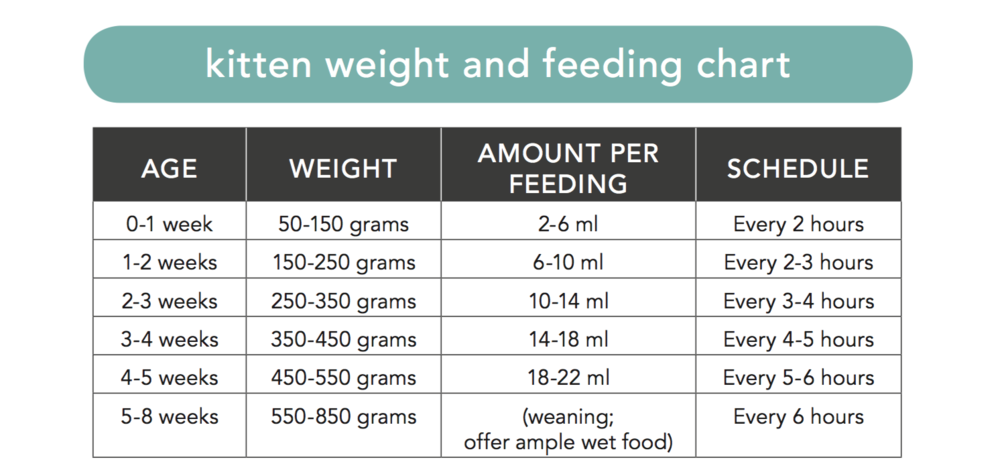 In the first month of life, he receives breasts on demand, and then a more or less stable diet is developed naturally. If for some reason the baby is deprived of breast milk and receives milk formula, then a free feeding schedule is impossible. The child eats according to the schedule, and the mother has to adhere to the recommended regimen.
In the first month of life, he receives breasts on demand, and then a more or less stable diet is developed naturally. If for some reason the baby is deprived of breast milk and receives milk formula, then a free feeding schedule is impossible. The child eats according to the schedule, and the mother has to adhere to the recommended regimen.
How to understand if a child is full
The signs that a child is full are universal: they are in a good mood, sound sleep, and regular stools.
If we consider not the momentary state of the child, but a longer period, then we need to monitor weight gain and skin condition. A baby who has enough nutrition will increase weight within the age norm - this will be assessed by the doctor during the control weighing. The baby's skin will be pink and firm.
Accordingly, a hungry child will worry, scream, cry, or may become lethargic and lethargic. He will rarely urinate and poop. A dry diaper for several hours is an alarming sign. Over time, the baby will begin to lag behind in weight, his skin may become pale, dry.
Over time, the baby will begin to lag behind in weight, his skin may become pale, dry.
But do not rush to give a supplement if the child has drunk the mixture and continues to grab the pacifier. Most likely, he ate, but did not satisfy the sucking reflex. Offer him a pacifier and watch for other signs: whether he will continue to worry, how his sleep will be. If you continue to doubt whether your baby is getting enough nutrition, check with your pediatrician.
How much formula should a child eat per month
A bottle-fed newborn should receive the mixture after 2.5-3 hours, that is, 8-10 times a day, including night feedings. The stomach of an infant in the first month of life is still too small to accommodate a large amount of food, so it is not recommended to take long night breaks between feedings at this age.
As for the volume of the mixture, it will depend not only on the age, but also on the weight of the baby.
In the first decade, that is, the first 10 days of life, the daily volume of the mixture is usually calculated as follows:
- if the baby's weight is less than 3 kg 200 g, then the number of days he has lived is multiplied by 70;
- if the weight is more than 3 kg 200 g, then the age in days is multiplied by 80.
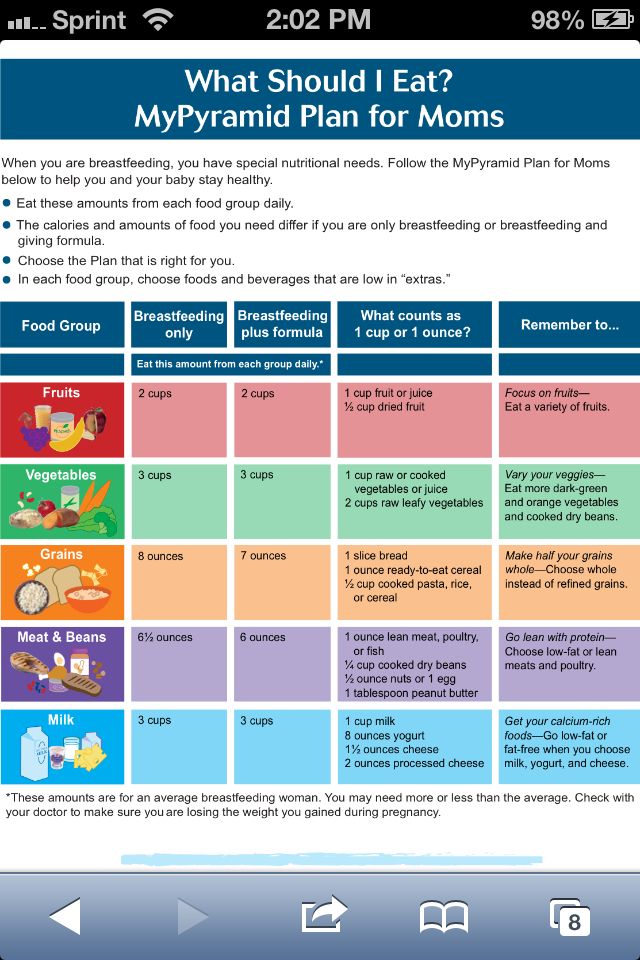
For example, a 6-day-old baby weighs 3 kg 400 g. Multiply 6 x 80 = 480 ml. We divide this volume by the number of feedings. Let's say you feed your baby 8 times, which means that in one feeding he should receive 60 ml of the mixture.
For a child older than 10 days, the formula calculation algorithm changes.
To calculate how much a child should eat mixtures in 1 month per day, you need to divide his body weight by 5. ⅕ of the child’s body weight is the daily amount of food.
For example, the same baby gained 4 kg by the 25th day of life. We divide 4 kg by 5, we get 800. Therefore, if the child continues to receive the mixture 8 times a day, then his single serving will be 100 g.
How much formula should a baby eat at 2 months
For a child of the second month of life, the same formula for calculating the mixture continues to operate: ⅕ of the weight is the daily volume. Divide by the number of feedings, we get a single serving.
In the third month, the number of feedings is reduced to 7-8. If the child ate 10 times, gradually transfer to 8 times, if 8, then to 7.
But when calculating how much a child should eat mixtures at 2 months and older, we use a different formula. The daily volume of the mixture should now be ⅙ of the child's weight. On average, this is 750 ml or more.
How much formula should a baby eat at 3 months
To determine how much a child should eat formula at 3 months, you need to divide his weight again by 6. For example, the weight of a child is 5 kg 400 g. Divide it by 6, we get a daily volume of 900 g.
The number of feedings at 3 months remains the same - 7-8 times. Let our conditional child eat 7 times a day. We divide 900 by 7, we get approximately 130 g of the mixture per feeding.
Mixture Rate Chart
For the convenience of selecting the volume of the mixture, depending on the age and weight of the child, you can use the following table *.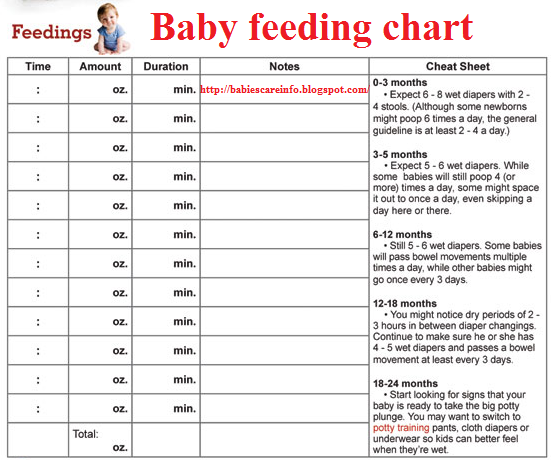 It contains average data, but since all children are different, the doctor should clarify the nutritional norm for a particular child.
It contains average data, but since all children are different, the doctor should clarify the nutritional norm for a particular child.
| Child's age | The ratio of nutrition and body weight per day | Daily volume of the mixture in ml | Number of feedings |
|---|---|---|---|
| From 10 days to 2 months | 1/5 | 700-850 | 8-10 |
| 2-4 months | 1/6 | 750-900 | 7-8 |
| 4-6 months | 1/7 | 850-1000 | 6 |
| Second half of life (6-12 months) | 1/8-1/9 | 950-1100 | 5-6 |

What to do if the child does not fill up with formula
First of all, you need to understand by what signs you determined that the child did not eat enough. If he keeps asking for a bottle when he's finished formula, it doesn't necessarily mean he's hungry. Perhaps the child wants to continue the process itself, because the sucking reflex in children on artificial feeding is less satisfied than in children on breastfeeding.
If the baby starts to worry and cry much before the next feeding time, consider if the breaks between meals are too long. With pronounced "hungry" anxiety of the child, feed early, but the volume of the mixture should correspond to a single volume.
This is important!
It is impossible to make the mixture “thicker” for satiety, add more dry product than indicated in the instructions! This can lead to constipation and other health problems for the baby.
If the baby is not gaining weight well, often worries, sleeps poorly, consult a pediatrician.


